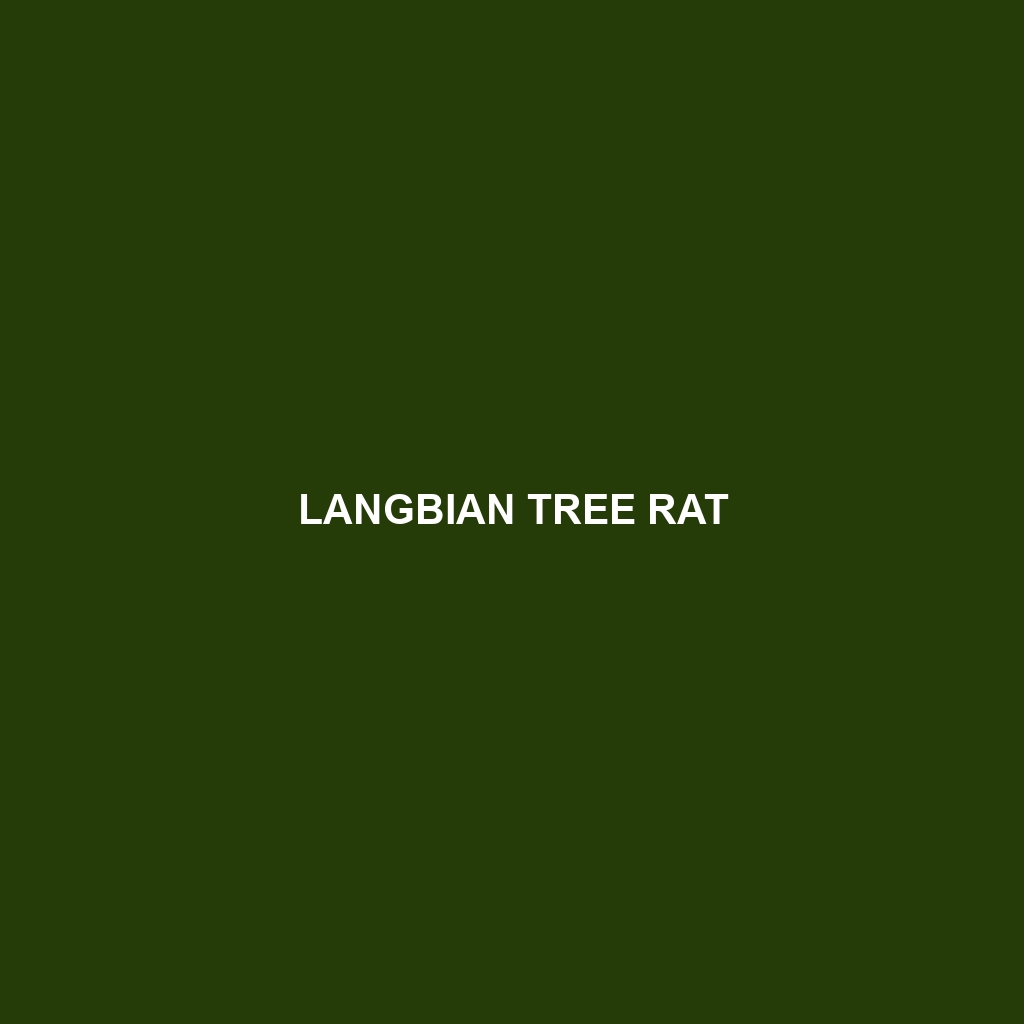Langbian Tree Rat
Common Name: Langbian Tree Rat
Scientific Name: Leopoldamys edwardsi
Habitat
The Langbian Tree Rat is primarily found in the highland regions of Vietnam, particularly in the Langbian Plateau. This unique rodent thrives in montane forests and dense vegetation, often making its home in the understory where humidity levels are high. Its habitat is characterized by a cool climate and rich biodiversity, making it an ideal environment for this species.
Physical Characteristics
The Langbian Tree Rat typically measures between 30 to 45 cm in length, including its long, bushy tail. Its fur is predominantly brown with a lighter underside, providing effective camouflage against the forest floor. Notable physical features include large, expressive eyes and prominent ears, which aid in its nocturnal activities. Its robust body shape and strong limbs make it an agile climber, adept at navigating through trees and shrubs.
Behavior
Langbian Tree Rats are primarily nocturnal, which means they are most active at night. They exhibit arboreal behavior, spending a significant portion of their time in trees. Known for their curious nature, these rodents are social animals, often found in small groups. They communicate through a series of vocalizations and scent markings, demonstrating complex social interactions. Their territorial habits and nesting behaviors are particularly intriguing, attracting interest from researchers and wildlife enthusiasts alike.
Diet
The diet of the Langbian Tree Rat mainly consists of fruits, seeds, and nuts found in its forest habitat. These rodents are also known to consume insects and small invertebrates, showcasing omnivorous feeding habits that allow them to adapt to varying food availability. Their foraging behaviors not only support their survival but also contribute to seed dispersal within their ecosystem.
Reproduction
Langbian Tree Rats typically breed during the wet season, which corresponds with an abundance of food resources. After a gestation period of approximately 30 days, females give birth to litters of 2 to 4 offspring. The young are weaned after a few weeks and quickly learn to forage alongside their parents. Notably, parental care is significant in this species, as young rats rely on their parents for survival during the early stages of life.
Conservation Status
The Langbian Tree Rat is currently classified as Vulnerable on the IUCN Red List. This status is largely attributed to habitat loss due to deforestation and agricultural expansion in its native range. Conservation efforts are critical to protect this unique species and its habitat from further degradation.
Interesting Facts
– The Langbian Tree Rat is often referred to as a “living fossil,” as it is one of the few surviving species in its genus that can provide insights into evolutionary biology.
– It plays a critical role in its ecosystem by aiding in seed dispersal, which benefits forest regeneration.
Role in Ecosystem
The Langbian Tree Rat is an essential component of its ecosystem, contributing to both seed dispersal and the food web. As a prey species, it supports larger predators, while its feeding habits promote plant diversity and growth in the montane forest. The interactions of this rodent with other species demonstrate its ecological importance and the intricate connections within the habitat it inhabits.
